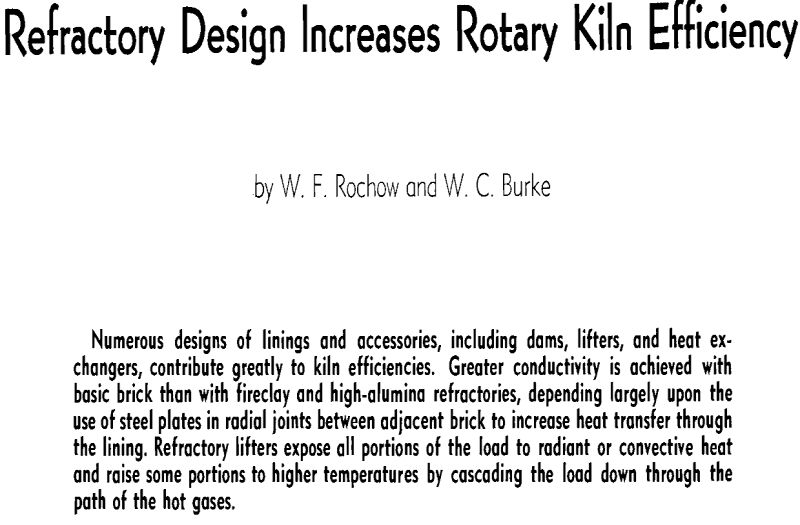Among the many factors involved in rotary kiln efficiency, advantageous use of refractories is of major importance. So far as kiln lining alone is concerned durability is most significant, as shutdowns for repairs are costly in fuel consumption and production losses. Aside from selection of refractories best suited to the widely varying conditions under which rotary kilns are operated, lining design and accessory constructions within the kiln are highly important.
Alumina-silica refractories with an alumina content of 50 pct and higher, termed high-alumina brick, are available in commercial classes of 50, 60, 70, 80, 85, and 90 pct alumina content. These refractories are generally used as high temperature zone linings or placed adjacent to the basic brick-lined sections when the treatment they are required to withstand is excessively severe.
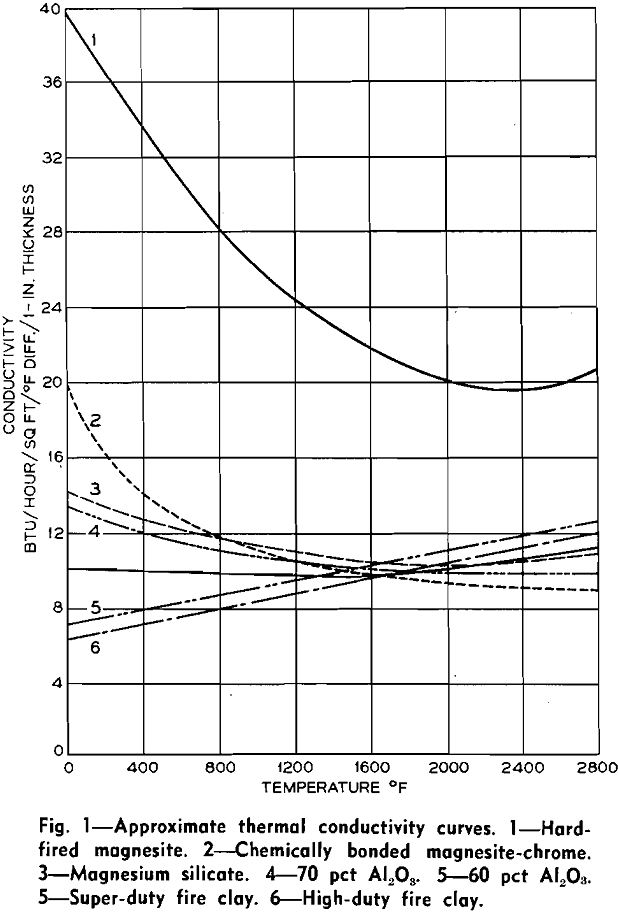
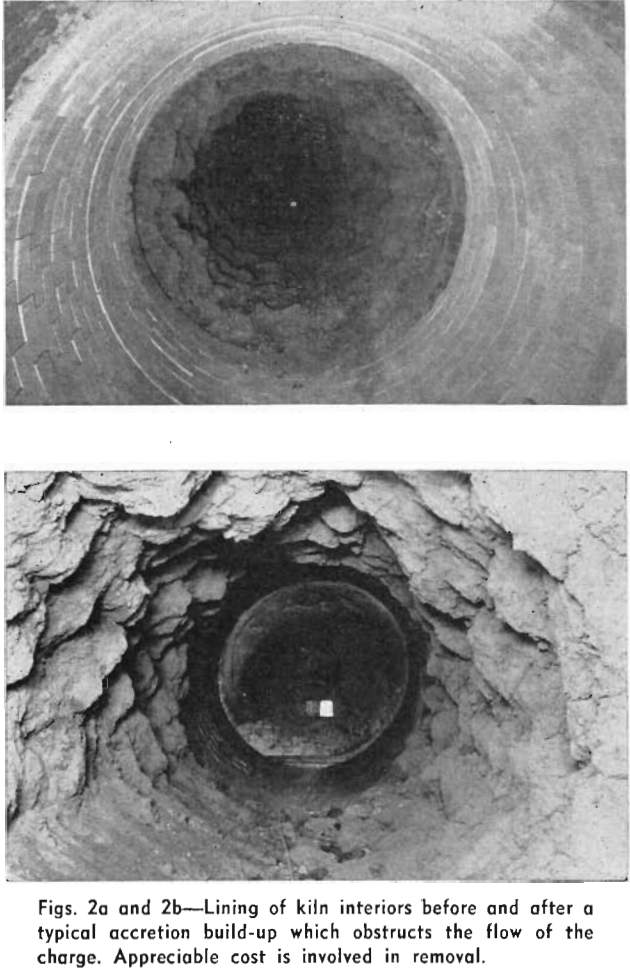
Among the classes of basic refractories are those consisting predominantly of chrome. There has been only limited experience with these in rotary kiln applications.
Since a comprehensive review of the properties of refractories commonly used in rotary kilns is largely outside the scope of this discussion, reference is made only to those of particular significance to this subject. On the assumption that the refractories used in the kiln lining will render reasonably long life, the physical properties of interest in this connection are those having to do mainly with heat losses.
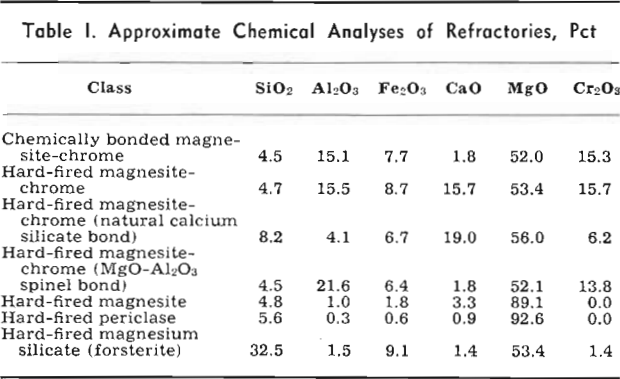
Formation of coatings may be caused by various phenomena. When not of such severity as to result in a fluid slag, chemical reaction between the charge and the lining can promote an accretion accumulation. Coatings can also be formed without appreciable fluxing of the lining, as in the clinker of certain mixes and the sintering of iron ore. In lime kilns the ash of pulverized coal used for fuel often accounts for development of the coatings and rings in the burning zones.
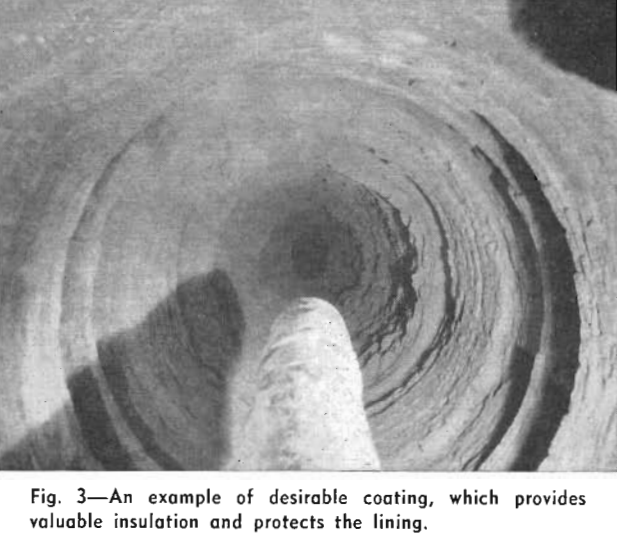
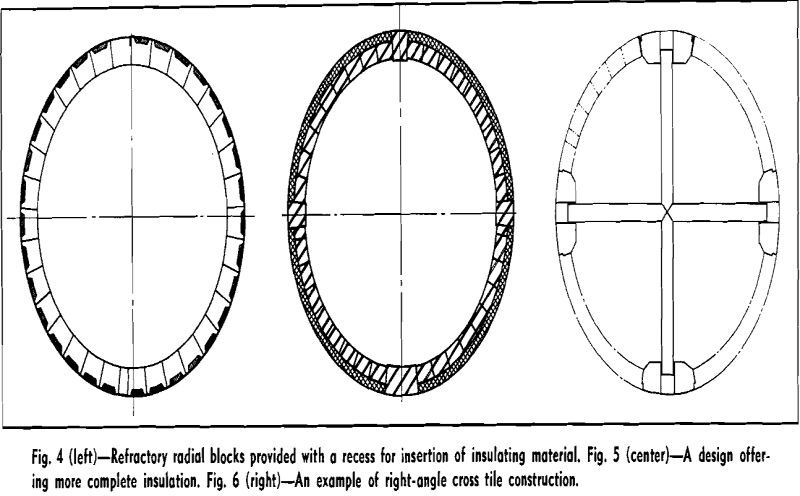
Insulation: At several plants it has been the practice to insulate basic refractory linings with fireclay brick because of the difficulty experienced in building and maintaining coatings. Without a substantial coating or adequate insulation the shell became overheated, owing to the relatively high conductivity of the basic brick. A 3-in. thick course of radial fireclay bricks laid in a close fit against the shell provides the insulation. Upon this is superimposed a 6-in. magnesite brick lining with 16-gage steel sheets in the radial joints. Insulating fire bricks are not used because they are not strong enough to resist the abrasion resulting from any movement of the refractory linings.
Block insulation has been used extensively for kiln lining in applications where the interface temperature is not high enough to cause shrinkage of the insulation. Successful use of this material is based on its slight compressibility and its capacity to withstand the pressure imposed upon it. In most cases rigid insulating fire bricks placed between the kiln shell and the refractory lining have had to be replaced prematurely.
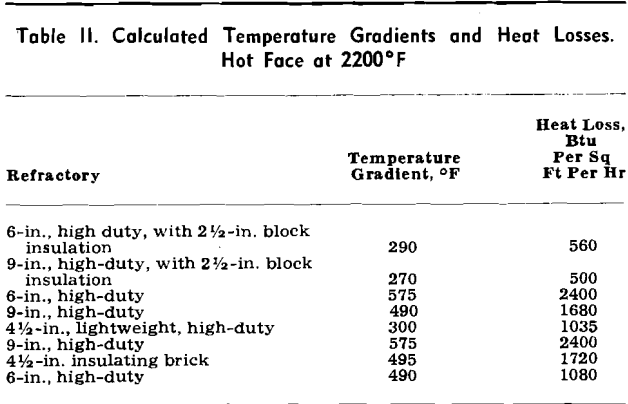
Accessory Refractory Constructions as Factors of Efficiency: As governed by the functions and various operating factors, kiln efficiencies are greatly benefited by the use of chains (with wet charges), preheaters, metallic lifters, and other devices. Use of equipment made of metals is limited to relatively low temperatures.
To accomplish the desired reactions in rotary kilns most effectively, it is necessary that the charge be brought into intimate contact with the hot gases and with the radiated heat from the refractory linings and other brickwork within the kilns. In general the accessory constructions can be regarded as baffles of one type or another. Various designs of lifters, dams, and pocket arrangements are used.
Dams: Among the refractory accessory constructions in any type of rotary kiln, probably the most widely used is the dam. For efficient operation, regardless of the product being processed, all the material must be subjected to the proper time temperature treatment.
Lifters: Highest thermal efficiency could be obtained only if each particle of the charge could be brought into direct contact with the hot gases. However, the charge always stays at the lowest part of the kiln and the hot gases pass over it. Moreover, the load or charge takes a set pattern in its journey through the kiln, the coarse particles revolving around the fines.
